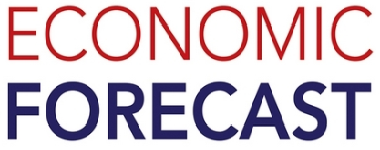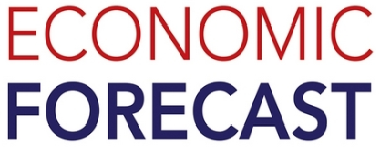Econintersect's Economic Index (EEI) moderately declined but still remains well into territory associated with normal expansions.

Analyst Summary of this Economic Forecast
Overall the decline this month is significant. Last month we warned that we are seeing mixed trend lines – which usually happens when there is an overall reversal in trends.
The forward-looking leading and coincident data trends show no agreement in rate or even direction of growth – no change from last month.
Note that the quantitative analysis which builds our model of the economy does not include personal income or expenditures data sets.
The relationship between retail sales and employment continues to improve and remains well into positive territory. Historically, when this ratio is in negative territory it indicates a slowing economy. Note that neither employment nor retail sales are part of our economic model.
Econintersect checks its forecast using several alternate monetary based methods – and the checked forecasts show economic growth.
Our employment forecast now indicates an improving trend line in the rate of employment growth six months from today.
Note that the majority of the graphics in this post-auto-update. The words are fixed on the day of publishing, and therefore you might note a conflict between the words and the graphs due to new data and/or backward data revisions.
This index is not designed to guess GDP – or the four horsemen used by the NBER to identify recessions (industrial production, business sales, employment, and personal income). It is designed to look at the economy at the Main Street level.
The graph below plots GDP (which has a bias to the average – not median – sectors) against the Econintersect Economic Index.

This post will summarize the:
Special Indicators:
The consumer is still consuming – and the ratio between spending and income remains about average to the levels seen since the Great Recession.
Seasonally Adjusted Spending's Ratio to Income (an increasing ratio means Consumer is spending more of Income)

The St. Louis Fed produces a Smoothed U.S. Recession Probabilities Chart which is currently giving no indication of an oncoming recession.
Smoothed recession probabilities for the United States are obtained from a dynamic-factor markov-switching model applied to four monthly coincident variables: non-farm payroll employment, the index of industrial production, real personal income excluding transfer payments, and real manufacturing and trade sales. This model was originally developed in Chauvet, M., “An Economic Characterization of Business Cycle Dynamics with Factor Structure and Regime Switching,” International Economic Review, 1998, 39, 969-996. (http://faculty.ucr.edu/~chauvet/ier.pdf)

Econintersect reviews the relationship between the year-over-year growth rate of non-farm private employment and the year-over-year real growth rate of retail sales. This index remains positive. When retail sales grow faster than the rate of employment gains (above zero on the below graph) – a recession is not imminent. However, this index has many false alarms.
Growth Relationship Between Retail Sales and Non-Farm Private Employment – Above zero suggests economic expansion

GDPNow
The growth rate of real gross domestic product (GDP) is the headline view of economic activity, but the official estimate is released with a delay. Atlanta's Fed GDPNow forecasting model provides a “nowcast” of the official estimate prior to its release. Econintersect does not believe GDP is a good tool to view what is happening at Main Street level – but there are correlations.
Latest forecast: 3.6 percent — September 28, 2018
The GDPNow model estimate for real GDP growth (seasonally adjusted annual rate) in the third quarter of 2018 is 3.6 percent on September 28, down from 3.8 percent on September 27. The nowcast of third-quarter real personal consumption expenditures growth decreased from 3.7 percent to 3.5 percent after this morning's personal income and outlays release from the U.S. Bureau of Economic Analysis.

Nowcast
The New York Fed also has introduced its own economic projection called Nowcast. Its current forecast:
- The New York Fed Staff Nowcast stands at 2.5% for 2018:Q3 and 2.9% for 2018:Q4.
- News from this week's data releases increased the nowcast for both 2018:Q3 by 0.2 percentage point and increased the nowcast for 2018:Q4 by 0.2 percentage point.
- Positive surprises from manufacturing data accounted for most of the increase.

A yield curve inversion historically has been an accurate predictor of an impending recession. A yield curve inversion is where short-term bonds have a higher yield than longer-term bonds. The graph below shows inversions prior to USA recessions.



